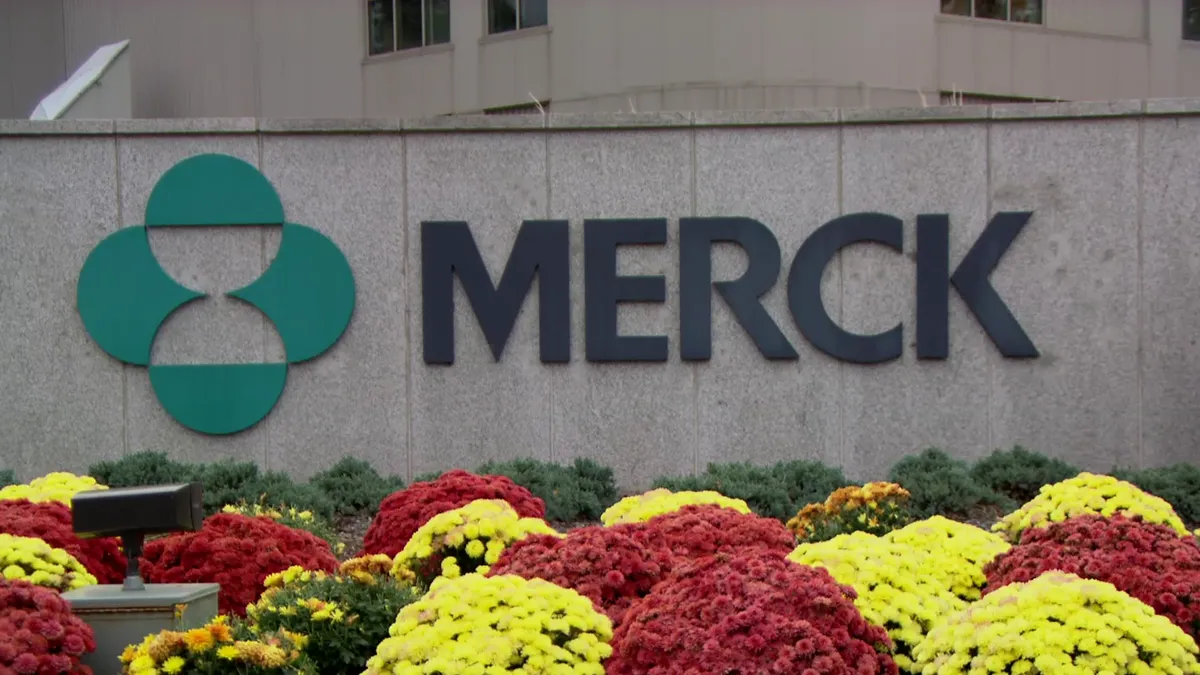Denise Myshko
The FDA’s new breakthrough therapy designation pathway, which was launched in 2012, aims to streamline and speed development of products for life-threatening diseases.
Many people with life-threatening diseases often have little options for treatment. Now the FDA is working with biopharmaceutical companies to address this gap with a new regulatory designation.
The breakthrough therapy designation was provided for in the Food and Drug Administration Safety and Innovation Act (FDASIA), which was signed into law in July 2012. It aims to provide a new regulatory pathway with additional support and guidance from agency officials.
Eric Kruep, Pharm.D., a director in the market access team at Xcenda, says the biggest and most obvious impact for manufacturers is a shorter timeline to commercialization for their products.
“This can translate into greater return on their investment for certain promising assets," he says. “The breakthrough timeline is often tied to a relatively less robust clinical development data package. As such, manufacturers may have more work to do in terms of communicating product value to providers and payers."
This designation can position manufacturers, especially smaller biotechnology companies, well for getting additional funding for R&D, says Sherry Madan, an assistant director on the market access team at Xcenda.
“Earlier product launch could mean coming to the market before competitors and hence possibly having a higher market share," she says.
So far, two products with FDA’s new breakthrough therapy designation have gained marketing approval. Both were approved in November 2013. The first was Roche and Genentech’s Gazyva (obinutuzumab) in combination with chlorambucil for the treatment of people with previously untreated chronic lymphocytic leukemia (CLL). The second was Pharmacyclic’s medicine Imbruvica.
With regard to Gazyva, the FDA granted Gazyva breakthrough therapy designation because of the significance of the positive progression-free survival results from the Phase III trial and the serious and life-threatening nature of CLL. Gazyva is a monoclonal antibody designed to attach to CD20, a protein found only on B-cells. It attacks targeted cells both directly and together with the body’s immune system.
“In the case of Gazyva, we were able to demonstrate that it more than doubled the time until disease progression," says Michelle Rohrer, Ph.D., VP of U.S. regulatory affairs at Genentech.
Roche has also received a breakthrough designation for a product in development, alectinib for ALK-positive non-small cell lung cancer (NSCLC). Data from a Phase I trial show the product has activity in patients resistant to crizotinib. It also appears to reduce brain metastasis, a finding unseen with other agents in this patient population.
Analysts predict that Gazyva will have sales by 2018 of about $1.45 billion
“We applied for the designation for alectinib because we hope that through enhanced communications and an all-hands-on-deck mindset at the FDA we will be able to design a development program that will make this medicine available to patients sooner," Dr. Rohrer says.
The other product approved with the breakthrough designation is Johnson & Johnson and Pharmacyclics’ Imbruvica (ibrutinib) to treat patients with mantle cell lymphoma who have received at least one prior therapy.
Imbruvica was granted the designation based on the overall response seen in the Phase II study. Imbruvica inhibits the function of Bruton’s tyrosine kinase (BTK), a key signaling molecule of the B-cell receptor signaling complex that plays an important role in the survival of malignant B cells. The product blocks signals that stimulate malignant B cells to grow. Imbruvica is also awaiting an approval decision to treat chronic lymphocytic leukemia.
Analysts at RBC Capital Markets are forecasting long-term annual worldwide sales of $5 billion for Imbruvica.
Urte Gayko, Ph.D., senior VP of global regulatory affairs at Pharmacyclics, says the breakthrough designation is intended to help the companies condense as efficiently as possible the development process.
“This provides us with a review approach that optimizes everything from an efficiency and timing point of view," she says. “In a way, this designation helps everybody to be on the same page."
Dr. Gayko says for Imbruvica, the company now has a commitment from the FDA to work out any issues that may come up during preparation or review of a breakthrough filing.
Additional Regulatory Support
Once a product has received the breakthrough designation, the FDA will make a commitment to provide timely advice to and to have interactive communication with the sponsor regarding the development of the drug.
In addition, the agency will assign a cross-disciplinary project lead for the FDA review team to facilitate an efficient review of the development program and to serve as a scientific liaison.
William Goeckeler, Ph.D., director, oncology medical affairs, at Boehringer Ingelheim Pharmaceuticals, says generally companies would communicate with the FDA during the development process in a very formal way.
“The breakthrough therapy designation allows companies to communicate on a more regular basis with the FDA to exchange information that is valuable in helping move clinical studies along," he says. “The designation provides enhanced communications channels so information can be exchanged more readily, which helps expedite the development of an investigational compound."
The designation also helps to provide transparency and earlier dialogue with the agency, says Kevin Lokay, VP and business unit, head for oncology, at Boehringer Ingelheim Pharmaceuticals.
“We’re working with regulators to provide them with as much information as early as possible so that they can make a decision," he says. “This designation creates a mutual recognition of the potential of an investigational compound and opens the dialogue between the agency and companies. It signals a willingness between the agency and manufacturers to help expedite the development and review of potential new treatments for the patients who need them as soon as possible."
Boehringer Ingelheim has received breakthrough designation for volasertib, an inhibitor of polo-like kinase (Plk) that is designed to inhibit the activity of Plk1, an enzyme in the Plk family that regulates cell division. This inhibition is intended to result in prolonged cell cycle arrest, ultimately leading to cell death.
Volasertib is being evaluated for the treatment of patients 65 or older with previously untreated AML, ineligible for intensive remission induction therapy.
In January 2013, volasertib was advanced into Phase III trials; the estimated completion date is April 2016.
Martin Mackay, Ph.D., executive VP, global head of R&D, at Alexion Pharmaceuticals, says his company has been able to meet with the FDA on a more frequent basis since receiving the breakthrough designation.
“This is a positive thing because we are working in an area that is truly frontier," he says.
Alexion has been granted breakthrough therapy designation for two products. One is cyclic pyranopterin monophosphate (ALXN1101), an enzyme co-factor replacement therapy for the treatment of patients with molybdenum co-factor deficiency (MoCD) type A, a severe and life-threatening, rare, genetic metabolic disorder that causes irreversible neurologic damage within the first weeks of life. This product is in Phase II clinical trials.
Alexion also received a breakthrough designation for asfotase alfa in infants and young children with hypophosphatasia (HPP), an inherited, rare metabolic disorder that leads to progressive damage to multiple vital organs, deformity of bones, and death.
A Phase II study found that infants and young children with HPP treated with asfotase alfa had significant improvement in skeletal mineralization after 24 weeks of treatment; 93% of the patients survived the first 48 weeks of treatment with 80% of patients having improved respiratory status.
FDA Guidance on Expedited Programs
The breakthrough therapy pathway was spearheaded by Friends of Cancer Research, a patient advocacy organization and received bipartisan support in Congress.
The law defines a breakthrough as a drug that treats a serious or life-threatening disease or condition and one in which preliminary clinical evidence indicates that the drug may demonstrate substantial improvement over existing therapies. As of Sept. 30, 2013, the FDA had granted 31 breakthrough therapy requests.
An FDA draft guidance released in June 2013 supports the idea that this designation can be used along with other expedited drug approval programs. The draft guidance is the agency’s effort to create a single resource for the FDA’s expedited programs, including fast track designation, accelerated approval, priority review, and breakthrough therapy designation.
The breakthrough therapy designation is meant to be used in conjunction with other efforts to expedite drug development and review.
The agency has several programs for expedited drug development programs. Fast track designation is intended to facilitate the development and expedite the review of drugs to treat serious conditions and fill an unmet medical need.
Accelerated approval can be used for speeding the development and approval of promising therapies that treat a serious or life-threatening condition. It allows approval of a drug that demonstrates an effect on a “surrogate endpoint" that is reasonably likely to predict clinical benefit.
Priority review, enabled through the Prescription Drug User Fee Act, shortens the review goal date to six months from the standard review timeline of 10 months.
Dr. Gayko says the breakthrough designation has a different focus from FDA’s other programs.
“There are some overlaps with the designation," she says. “Accelerated review, for example, does address medical need but that path is focused on certain approval processes, endpoints, and surrogates for approvals. In principle, breakthrough designation is intended to give stronger support from the agency."
Dr. Gayko says the designation helps to create alignment between sponsors and regulators.
“The expectation is that there is an alignment on the fact that a breakthrough therapy is an improvement over what’s available, and there will be consistent support moving through the development process," Dr. Gayko says.
So far, the FDA is the only regulatory authority to have a pathway for breakthrough therapies.
“This puts the United States on the cutting edge and helps provide a positive ripple effect to the other worldwide health authorities," Dr. Rohrer says.
“Companies receiving a breakthrough therapy designation have to ensure they have a manufacturing process and can highlight the product’s value proposition among payers in spite of the limited safety data from an abbreviated trial."
Sherry Madan / Xcenda
“The biggest and most obvious impact for manufacturers is a shorter timeline to commercialization of their product. This can translate into greater return on their investment for certain promising assets. "
Dr. Eric Kruep / Xcenda
“Obtaining advice from the FDA about generating the evidence that we need to support approval of the drug leads to efficiency in development."
Dr. Martin Mackay Alexion Pharmaceuticals
“The designation signals a willingness between the agency and manufacturers to help expedite the development and review of potential new treatments for patients who need them."
Kevin Lokay / Boehringer Ingelheim
“Having a breakthrough therapy designation allows for additional FDA guidance while we are progressing through our clinical development program."
Dr. William Goeckeler / Boehringer Ingelheim
“For molecules that have early compelling clinical evidence, we can work with the FDA to get them to patients who have unmet medical needs as fast as possible."
Dr. Michelle Rohrer / Genentech
Chart:
The FDA’s Expedited Programs
















